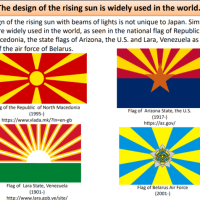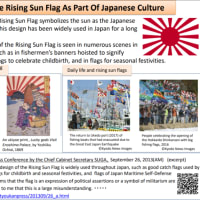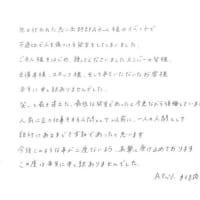There's No Such Thing as Everlasting Love (According to Science)
Emily Esfahani Smith Jan 24 2013, 11:52 AM ET
2013年のものだけど、TLにながれてきて、読んで見たら少し面白かった。
There's No Such Thing as Everlasting Love(永遠の愛などない)、 というより、独自の愛の概念を提唱しているわけですね。
What Is This Thing Called Love?
A Whole New Way of Looking at It
By Barbara Fredrickson
The Science of Love: How Positivity Resonance Shapes the Way We Connect
by Maria Popova
すんごく、かいつまんでいうと、
といった感じか。そのようなものを、この研究者は愛と呼ぶのである。そして、そうした愛は、わりに日常的にあって、例えばアームストロングの歌詞
のなかにあるような感じで、、友人同士でも、子供とでも、また、見知らぬ人との間でも普段、起きている現象なのだ、と。
永遠の愛なんてもんに若いうちはあこがれるが、そんなものが生物的には不可能なんだ、と。愛というのはそんな敷居がたかいものではなく、ちょっとした瞬間に感じられるものなんだ、というわけですね。だから、独身の人だって、愛に満ちた生活はできる、というわけでしょうね。
じゃあ、継続的な愛がないか、というと
The Science of Love: How Positivity Resonance Shapes the Way We Connect
by Maria Popova
10 things you might not know about love
By Barbara Fredrickson, Special to CNN
Updated 1037 GMT (1837 HKT) January 24, 2013
そうではなく、こうした瞬間の愛が、何度も同じ二人の間に、繰り返し生じて、年月を通じて共有されることで、夫婦の絆、結束のようなものになっていくのだ、と。
苦しんでいる人に対しても優しい気持ちになることもあり、それが同情という形の愛なんだ、と。
こうした瞬間の愛を感じるとき、生理的に、
脳波のパターンまで、同調し、また、
両者にオキシトシンが分泌され、さらに、
Think yourself well
You can. But it helps to think well of yourself in the first place
Dec 8th 2012
How effectively the vagus nerve is working can be tracked by monitoring someone’s heart rate as he breathes in and out. Healthy vagal function is reflected in a subtle increase in heart rate while breathing in and a subtle decrease while breathing out. The difference yields an index of vagal tone, and the value of this index is known to be connected with health. Low values are, for example, linked to inflammation and heart attacks.
What particularly interested Dr Fredrickson and Dr Kok was recent work that showed something else about the vagal-tone index: people with high tone are better than those with low at stopping bad feelings getting overblown.
Dr Fredrickson and Dr Kok discovered that vagal tone increased significantly in people who meditated, and hardly at all in those who did not. Meditators who started with particularly low scores showed virtually no such boost.
Taken as a whole, these findings suggest high vagal tone makes it easier to generate positive emotions and that this, in turn, drives vagal tone still higher. Which is good news for the emotionally positive, but bad for the emotionally negative, for it implies that those who most need a psychosomatic boost are incapable of generating one. A further (as yet unpublished) experiment by Dr Kok suggests, however, that the grumpy need not give up all hope. A simpler procedure than meditation, namely reflecting at night on the day’s social connections, did seem to cause some improvement to their vagal tone. This might allow even those with a negative outlook on life to “bootstrap” their way to a mental state from which they could then advance to the more powerful technique of meditation.
迷走神経も緊張の度合いもあがり、その度合いが増すことによって、また、愛情をもった優しい気持ちになる、すると、迷走神経が緊張するといった相互に増強しあう関係を作動させるのだ、と。
Emily Esfahani Smith Jan 24 2013, 11:52 AM ET
2013年のものだけど、TLにながれてきて、読んで見たら少し面白かった。
There's No Such Thing as Everlasting Love(永遠の愛などない)、 というより、独自の愛の概念を提唱しているわけですね。
What Is This Thing Called Love?
A Whole New Way of Looking at It
By Barbara Fredrickson
To put it in a nutshell, love is the momentary upwelling of three tightly interwoven events: first, a sharing of one or more positive emotions between you and another; second, a synchrony between your and the other person’s biochemistry and behaviors; and third, a reflected motive to invest in each other’s well-being that brings mutual care.
My shorthand for this trio is positivity resonance. Within those moments of interpersonal connection that are characterized by this amplifying symphony—of shared positive emotions, biobehavioral synchrony, and mutual care—life-giving positivity resonates between and among people. This back-and-forth reverberation of positive energy sustains itself—and can even grow stronger—until the momentary connection wanes, which is of course inevitable, because that’s how emotions work.
I’ve come up with a visual metaphor for positivity resonance that likens it to a mirror. This seems apt because a moment of positivity resonance, by definition, involves considerable mirroring at three different levels: you and the other person mirror the positivity in each other’s emotional state; you mirror each other’s gestures and biochemistry; and you mirror each other’s impulse to care for one another. So in a moment of positivity resonance, to some extent, you each become the reflection and extension of the other.
Positivity resonance doesn’t spring up at random. It emerges within certain circumstances, stemming from particular patterns of thought and action. These are love’s bedrock prerequisites. The first precondition is a perception of safety
Love’s second precondition is connection, true sensory and temporal connection with another living being. You no doubt try to “stay connected” when physical distance keeps you and your loved ones apart. You use the phone, email, and increasingly texts or Facebook, and it’s important to do so. Yet your body, sculpted by the forces of natural selection over millennia, wasn’t designed for the abstractions of long-distance love, the XOXOs and LOLs. It hungers for more. It hungers for moments of oneness.
Feelings of oneness surface when two or more people “sync up” and come to act as one
Thus, true connection is a prime reason that love isn’t unconditional, but instead requires a particular stance. Neither abstract nor mediated, true connection is physical and unfolds in real time. It requires a co-presence of bodies, and the main mode of sensory connection, scientists contend, is eye contact. Other forms of real-time sensory contact—through touch, voice, or mirrored body postures and gestures—no doubt connect people as well and, at times, can substitute for eye contact. Nevertheless, eye contact may well be the most potent trigger for connection and oneness.
Eye contact is the key that unlocks the wisdom of your intuitions because when you meet your smiling coworker’s gaze, her smile triggers activity within your own brain circuitry that allows you to simulate—within your own brain, face, and body—the emotions you see emanating from hers. You now know, through this rapid and nonconscious simulation, more about what it feels like to have smiled like that.
To be clear, the sensory and temporal connections you establish with others through eye contact, touch, conversation, or other forms of behavioral synchrony are not, in and of themselves, love. Even holding hands, after all, can become a loveless habit. Yet in the right contexts, these gestures become springboards for love. The right contexts are those infused with the emotional presence of positivity
Love, then, requires connection. This means that when you’re alone, thinking about those you love, reflecting on past loving connections, yearning for more, or even when you’re practicing loving-kindness meditation or writing an impassioned love letter, you’re not in that moment experiencing true love. It’s true that the strong feelings you experience when by yourself are important and absolutely vital to your health and well-being. But they’re not (yet) shared, and so they lack the critical and undeniably physical ingredient of resonance. Physical presence is key to love, to positivity resonance
Love requires you to be physically and emotionally present.
Looking back, I now recognize that even though we were physically present with our son as we’d walked him to sleep, at first we weren’t also emotionally present. I have no doubts that infants can pick up on mismatches between their parents’ outward actions and inner experiences. In our case, this mismatch had initially prevented the joys and benefits of cross-generational positivity resonance from emerging.
The Science of Love: How Positivity Resonance Shapes the Way We Connect
by Maria Popova
The boundaries between you and not-you — what lies beyond your skin — relax and become more permeable. While infused with love you see fewer distinctions between you and others. Indeed, your ability to see others — really see them, wholeheartedly — springs open. Love can even give you a palpable sense of oneness and connection, a transcendence that makes you feel part of something far larger than yourself.
すんごく、かいつまんでいうと、
愛とは、危険がない環境で、いっしょにいる人と、アイコンコンタクトなどの感覚的接触を通じて、お互いに思いやり、生理的、精神的、身体的に、一体となる場合に、一時的に生じるプラス感情である、
といった感じか。そのようなものを、この研究者は愛と呼ぶのである。そして、そうした愛は、わりに日常的にあって、例えばアームストロングの歌詞
. Louis Armstrong put it best in "It's a Wonderful World" when he sang, "I see friends shaking hands, sayin 'how do you do?' / They're really sayin', 'I love you.'"
友人たちは握手を交わしながら「ご機嫌よう」と言い
心から「大好きだよ」と言い合う
のなかにあるような感じで、、友人同士でも、子供とでも、また、見知らぬ人との間でも普段、起きている現象なのだ、と。
But if true love is defined as eternal passion, it is biologically impossible.
Love 2.0 is, by contrast, far humbler. Fredrickson tells me, "I love the idea that it lowers the bar of love. If you don't have a Valentine, that doesn't mean that you don't have love. It puts love much more in our reach everyday regardless of our relationship status."
永遠の愛なんてもんに若いうちはあこがれるが、そんなものが生物的には不可能なんだ、と。愛というのはそんな敷居がたかいものではなく、ちょっとした瞬間に感じられるものなんだ、というわけですね。だから、独身の人だって、愛に満ちた生活はできる、というわけでしょうね。
じゃあ、継続的な愛がないか、というと
The Science of Love: How Positivity Resonance Shapes the Way We Connect
by Maria Popova
10 things you might not know about love
By Barbara Fredrickson, Special to CNN
Updated 1037 GMT (1837 HKT) January 24, 2013
I used to uphold love as that constant, steady force that all but defines my marriage. While that constant, steady force still exists, I now see our bond as a product of the many micro-moments of positivity resonance that my husband and I have shared over the years. This shakes me out of any complacency that tempts me to take our love for granted. Love is something we should re-cultivate every single day.
そうではなく、こうした瞬間の愛が、何度も同じ二人の間に、繰り返し生じて、年月を通じて共有されることで、夫婦の絆、結束のようなものになっていくのだ、と。
Love and compassion can be one and the same.
If we reimagine love as micro-moments of shared positivity, it can seem like love requires that you always feel happy. I learned that this isn't true. You can experience a micro-moment of love even as you or the person with whom you connect suffers.
Love doesn't require that you ignore or suppress negativity. It simply requires that some element of kindness, empathy or appreciation be added to the mix. Compassion is the form love takes when suffering occurs.
苦しんでいる人に対しても優しい気持ちになることもあり、それが同情という形の愛なんだ、と。
there are three players in the biological love system—mirror neurons, oxytocin, and vagal tone.
こうした瞬間の愛を感じるとき、生理的に、
What they found was remarkable. In some cases, the brain patterns of the listener mirrored those of the storyteller after a short time gap
脳波のパターンまで、同調し、また、
Researchers have found, for instance, that when a parent acts affectionately with his or her infant—through micro-moments of love like making eye contact, smiling, hugging, and playing—oxytocin levels in both the parent and the child rise in sync.
両者にオキシトシンが分泌され、さらに、
Think yourself well
You can. But it helps to think well of yourself in the first place
Dec 8th 2012
How effectively the vagus nerve is working can be tracked by monitoring someone’s heart rate as he breathes in and out. Healthy vagal function is reflected in a subtle increase in heart rate while breathing in and a subtle decrease while breathing out. The difference yields an index of vagal tone, and the value of this index is known to be connected with health. Low values are, for example, linked to inflammation and heart attacks.
What particularly interested Dr Fredrickson and Dr Kok was recent work that showed something else about the vagal-tone index: people with high tone are better than those with low at stopping bad feelings getting overblown.
Dr Fredrickson and Dr Kok discovered that vagal tone increased significantly in people who meditated, and hardly at all in those who did not. Meditators who started with particularly low scores showed virtually no such boost.
Taken as a whole, these findings suggest high vagal tone makes it easier to generate positive emotions and that this, in turn, drives vagal tone still higher. Which is good news for the emotionally positive, but bad for the emotionally negative, for it implies that those who most need a psychosomatic boost are incapable of generating one. A further (as yet unpublished) experiment by Dr Kok suggests, however, that the grumpy need not give up all hope. A simpler procedure than meditation, namely reflecting at night on the day’s social connections, did seem to cause some improvement to their vagal tone. This might allow even those with a negative outlook on life to “bootstrap” their way to a mental state from which they could then advance to the more powerful technique of meditation.
迷走神経も緊張の度合いもあがり、その度合いが増すことによって、また、愛情をもった優しい気持ちになる、すると、迷走神経が緊張するといった相互に増強しあう関係を作動させるのだ、と。



















